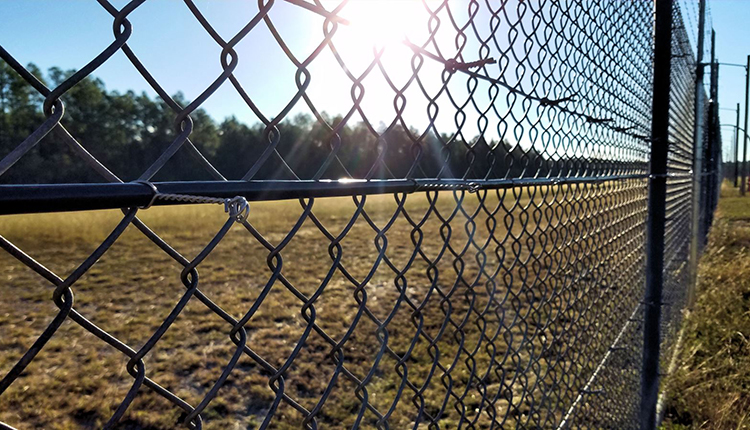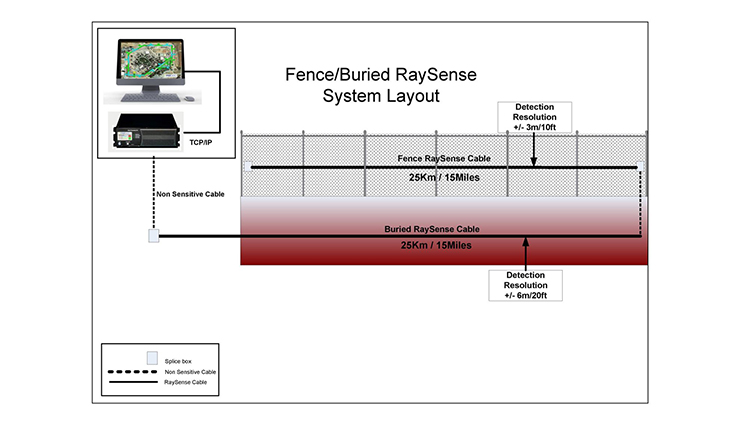Reasons to Choose a Fiber Optic Security System for Commercial Security Applications
Improve Your Safety And Security With Advanced Fiber Optic Safety And Security Solutions
In a period where protection is vital, advanced fiber optic safety and security systems provide an engaging service for improving safety throughout different settings. What implications do these improvements hold for future security steps?
Advantages of Fiber Optic Security
Utilizing the advantages of fiber optic innovation significantly enhances security systems across various applications. One of the main advantages is the raised bandwidth capacity, enabling the transmission of huge quantities of information at high speeds. This is especially essential for real-time video monitoring, where high-resolution feeds can be sent out without latency, making certain immediate reaction abilities.
Additionally, fiber optics exhibit superior resistance to electromagnetic interference, which is important in atmospheres with potential signal disruptions. This reliability ensures consistent efficiency in critical security procedures. Moreover, fiber optic cable televisions are less prone to tapping and unapproved gain access to compared to conventional copper wiring, consequently improving data integrity and discretion.
One more notable advantage is the sturdiness of fiber optic systems; they are much more resistant to ecological elements such as dampness, temperature level variations, and destructive substances. This durability translates to decrease maintenance prices and longer life expectancies for security installments.
Lastly, the light-weight nature of fiber optic cables helps with much easier installment and directing, specifically in intricate infrastructures (fiber optic security system). Ultimately, the combination of fiber optic modern technology into protection systems not only strengthens protection actions but likewise maximizes operational efficiency
Secret Attributes to Think About
When assessing fiber optic protection systems, several crucial functions need to be considered to ensure ideal efficiency and efficiency. Analyze the system's discovery variety and level of sensitivity; a substantial variety enables for keeping an eye on large areas, while high sensitivity makes sure that also small disturbances are found immediately.
Next, take into consideration the assimilation abilities of the system. A fiber optic safety and security system should flawlessly interface with existing security steps such as cameras and alarms, producing a cohesive safety and security network.
Sturdiness and ecological resistance are likewise vital functions. Make sure that the system is designed to endure extreme weather and potential physical risks, as this will extend its operational lifespan.

Last but not least, check into the scalability of the system. A robust fiber optic safety system ought to be conveniently expandable to fit future needs without significant overhauls. By carefully considering these attributes, you can pick a fiber optic safety and security service that enhances security and safety in your environment.
Setup Refine Introduction
To efficiently carry out a fiber optic safety system, a methodical installment procedure is vital. This process begins with a thorough website assessment to establish the certain security requirements and to determine ideal areas for fiber optic cables and safety gadgets. Following this assessment, the setup team will create a comprehensive strategy, including cable pathways, needed devices, and conformity with local policies.
Next, the setup involves laying the fiber optic wires, guaranteeing they are safeguarded from environmental elements and physical damage. Appropriate handling techniques are critical, as fiber optic wires are sensitive and can be conveniently damaged. After the cabling is installed, adapters and discontinuations are meticulously finished to make certain signal integrity.
The succeeding phase is composed of mounting safety gadgets such as video cameras, motion detectors, and alarm system systems, all integrated with the fiber optic network. Strenuous testing is carried out to validate that all parts are functioning appropriately and to make certain ideal performance.

Comparing Fiber Optic to Standard Solutions
The evolution of security technology has led to considerable advancements in the contrast in between fiber optic systems and conventional copper-based systems. Fiber optic systems utilize light to send information, providing exceptional data transfer and rate contrasted to their copper counterparts. This results in improved information transmission capabilities, making fiber optics optimal for high-resolution video security and real-time tracking.
Furthermore, fiber optic cable televisions are immune to electromagnetic interference, lowering the likelihood of signal destruction caused by outside factors. This particular makes certain consistent efficiency, also in difficult atmospheres. On the other hand, conventional copper systems are a lot more susceptible to interference, leading to prospective susceptabilities in safety and security applications.
Resilience is an additional benefit of fiber optic systems. They are much less prone to damage from ecological aspects such as wetness and temperature level fluctuations, which can compromise copper wiring. Fiber optics are lighter and click resources thinner, permitting for easier setup and reduced physical impact.
Nevertheless, conventional systems have a tendency to have reduced initial prices, making them appealing for budget-conscious projects. While fiber optic systems may require a greater ahead of time financial investment, their long-term advantages-- such as reduced maintenance expenses and higher dependability-- typically surpass the preliminary cost, positioning them as a premium option for contemporary safety demands.
Future Patterns in Safety Modern Technology
Arising fads in security technology are positioned to transform the landscape of monitoring and hazard detection - fiber optic security system. As organizations progressively face sophisticated hazards, developments such as expert system (AI) and artificial intelligence (ML) are becoming integral to safety and security systems. These technologies boost the capability of fiber optic systems by allowing real-time data analysis, determining abnormalities, and automating responses to prospective violations
Additionally, the integration of the Web of Things (IoT) is reinventing security structures. IoT tools can give extensive situational understanding and assist in smooth communication between different safety elements. This interconnectedness enables extra effective surveillance and faster event reaction times.
Biometric verification is likewise gaining momentum, supplying a greater level of security through special physical look at more info features. As this technology progresses, it is most likely to be integrated right into fiber optic systems for boosted accessibility control.
Verdict
To conclude, progressed fiber optic safety and security systems stand for a considerable innovation in security and monitoring modern technology. Their superior transmission capacity, resistance to interference, and sturdiness assist in trustworthy surveillance and information integrity. As these systems integrate AI and IoT capabilities, they enhance the overall protection framework, guaranteeing durable defense for possessions. The shift from traditional systems to fiber optic remedies mirrors a growing pattern towards more efficient and reliable security actions in click here for more info a significantly complex technical landscape.